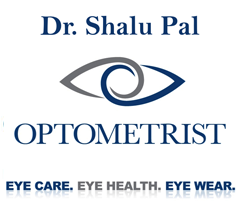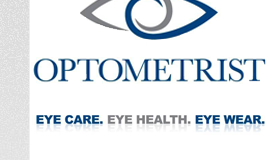Astigmatism
Refraction is the term used to describe the testing procedure used to determine what lens prescription a patient may need to see well. Light bends when it passes through lenses or prisms, and also when it passes through the surfaces of the eye. The first major surface that light passes through on its way to the retina is the cornea.
Astigmatism is one of the common refractive errors, along with myopia (nearsightedness) and hyperopia (farsightedness). Pronounced "ah-stig-mah-tizm," it usually occurs when the cornea, which is the clear outer shell over the iris, is not spherical but has an oval curvature. (Note: the prefix "a-" means "non," and the rest of the word refers to "point of focus." Thus, the word "astigmatism means "non-point focus." Therefore, patients are said to have "astigmatism," not "a Stigmatism.") Eyecare practitioners also refer sometimes to the astigmatism correction as cylinder. Specialty contact lenses for astigmatism are called toric lenses, which refers to the curvatures on the back side of the lenses. Usually, astigmatism is associated with either myopia or hyperopia as well.
Figure 1 is a diagram of how astigmatism results from differences of the curvatures on the front surface of the eye. Mild or moderate astigmatism is quite common and may be corrected easily with glasses or contact lenses.
It may be useful to imagine the shape of an egg. If you hold the egg horizontally out in front of you, it is, of course, longer lengthwise than up and down; that is, the egg has two different curvatures, instead of only one like an orange has. If the cornea is shaped in a similar way, light coming through it in the vertical meridian will focus in a different place than light coming in horizontally, because those curves are different. In astigmatism, even if one of the curvatures focuses exactly on the retina, the patient will still experience blurred vision because all the rest of the light will still be out of focus. (See Figure 2.)
Most patients have a slight to moderate amount of astigmatism, and may have either myopia or hyperopia as well, all of which are easily corrected with spectacles or contact lenses and require no other treatment. However, some patients have a more severe form, which can be genetic in nature or result from various conditions that change the shape of the cornea itself.
Because even mild uncorrected astigmatism can cause blurred vision, distortion of objects and result in headaches, fatigue and eyestrain from squinting, patients should wear corrective lenses. Left uncorrected, astigmatism can affect learning by making it more difficult to process visual information.
Rigid gas permeable contact lenses provide correction for astigmatism by giving the front of the eye a new curvature; when the tears fill the gap between the lens and the eye, it acts as if the surface is spherical. Soft contact lenses are also available to correct astigmatism, and adults can also choose to correct it with LASIK surgery.
A comprehensive vision examination will determine if astigmatism is present, and the eyecare practitioner will be able to suggest the best options for correcting it in each individual case.
There are more severe types of astigmatism, which are more problematic to treat and/or correct. Sometimes, large amounts of astigmatism can be inherited, causing blurred vision at all distances. In very young children, uncorrected astigmatism of this type can lead to refractive amblyopia. Because the vision is blurred everywhere the child looks, vision cannot develop normally during the critical period from infancy through about age seven or eight. This is one of the things that can be easily ruled out or diagnosed when parents bring their children in for a vision examination before the age of three.
Additionally, there are some corneal disorders, including bullous keratopathy and keratoconus, as well as other corneal dystrophies, which can cause severe and particularly distorted vision, known as irregular astigmatism. This particular type of astigmatism cannot be corrected with conventional eyeglasses, but requires rigid gas permeable contact lenses, which can help provide a new, undistorted front surface of the eye and even help make it more spherical when the lenses are removed.
People who have family members with severe astigmatism should be certain to have their young children examined regularly to prevent possible refractive amblyopia, and to correct the child’s vision even in mild cases, to help make learning easier and faster.
Adults also benefit from correction of any astigmatism to improve clarity and comfort, as well as reduce eyestrain and fatigue.







